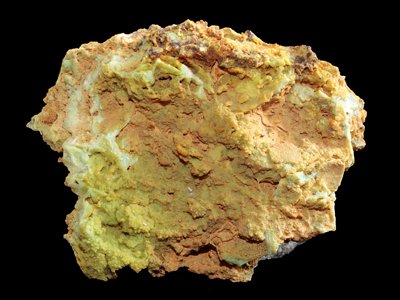Hidalgoite, PbAl3(AsO4)(SO4)(OH)4, is a rare member of the beudantite group and is usually classified as part of the alunite family. It is a trigonal-hexagonal scalenohedral mineral containing aluminum, arsenic, hydrogen, lead, oxygen, and sulfur. It occurs as a secondary mineral in oxidized polymetallic sulfide deposits.
It was named after the place where it was first discovered, the Zimapán mining district, Hidalgo, Mexico. It is an uncommon mineral that can be found in additional localities in the United States, France, Switzerland, Germany, England, Australia, and Namibia, among a few others.
General Information
- Category: Sulfate mineral
- Formula: PbAl3(AsO4)(SO4)(OH)4
- Crystal system: Trigonal
- Crystal class: Hexagonal scalenohedral (3m)

Fig: Hidalgoite – a member of beudantite group
Properties
Hidalgoite is usually seen as light gray to dark gray colors but another variety of colors is seen to include rich shades of green, some dark reds and very rarely yellow. Physical properties of hidalgoite include its gray-white to light gray color, a white streak, specific gravity of 3.96 and a hardness of 4.5. Hidalgoite specimens are usually translucent to sub opaque, and the brittle nature of mineral produces conchoidal fractures. It has an earthy luster.
- Color: White, pale green, pistachio-green, emerald-green
- Fracture: Irregular to conchoidal
- Tenacity: Brittle
- Mohs scale hardness: 4.5
- Luster: Earthy or dull in aggregates
- Streak: White
- Diaphaneity: Translucent
- Specific gravity: 3.71–3.96
- Optical properties: Uniaxial (+)
Geologic occurrence
The occurrences of hidalgoite have been seen across many continents from South America to Africa. It was initially discovered between large bodies of quartz dike as a white porous substance alongside other sulfates but has since been seen in other parts of the world. In Nye County, Nevada, hidalgoite is seen as clear prismatic crystals with other secondary lead minerals such as mimetite and beaudantite.
Hidalgoite specimens are usually associated with copper minerals, clay minerals, iron oxides and polymetallic sulfides in occurrence.
















